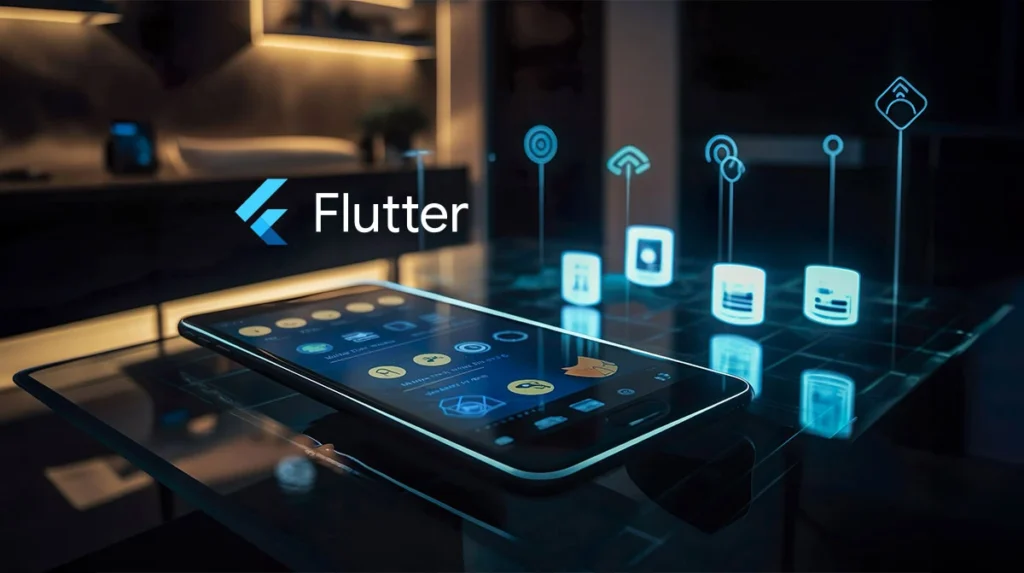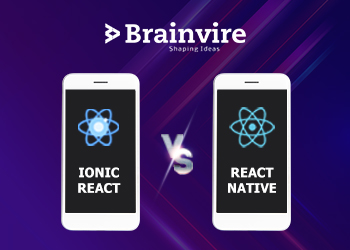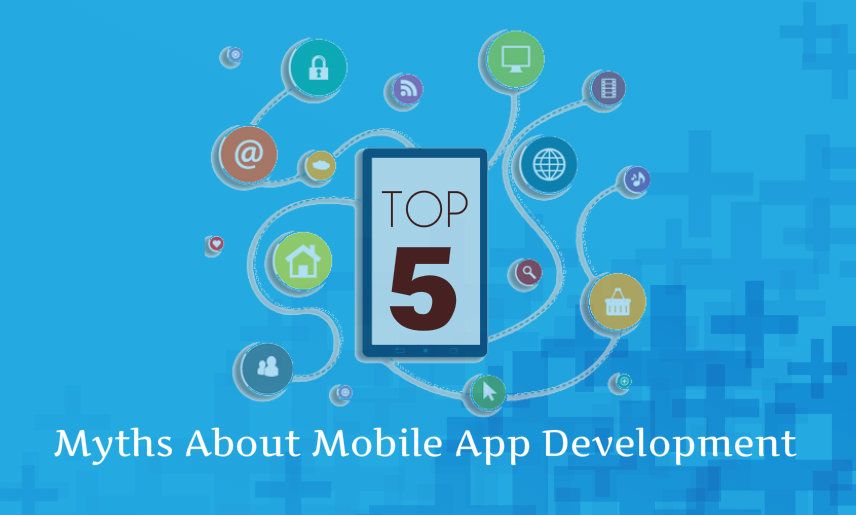Introduction
The software market is dominated by new software every year; this year, it’s Flutter and IoT.
The new buzzword in the digital world is IoT-Flutter, a new approach to innovation and technology that combines the concept of creativity as an idea.
Flutter has emerged as the ultimate accelerator for IoT app development, delivering a smooth and intelligent digital solution. With one click, you can remove anything from anywhere on the globe.
The Internet of Things has made all of this feasible. According to estimates, the worldwide IoT industry is predicted to grow by over $1560 billion by the end of 2027. Imagine the miracles that IoT will offer when merging with Flutter.
With its flexible architecture and expressive UI components, Flutter goes beyond standard app development. It allows developers to tap into an era of flutter IoT apps that transform our relationship with technology.
Let’s explore the possibilities Flutter and IoT can add to your workflow through topics that explore features, perks, and use cases in practical applications.
Key Features of Flutter That Benefit IoT Development
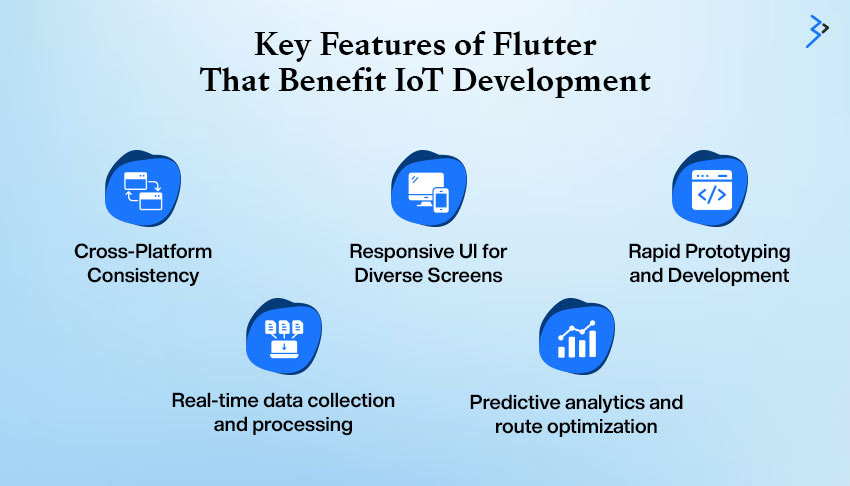
1. Cross-Platform Consistency:
Flutter’s cross-platform design enables developers to maintain a consistent user experience across various devices, from tablets and mobile phones to embedded systems that power IoT devices. Partnering with an Adobe Experience Manager solutions consultant can further enhance content management and digital experiences, ensuring seamless integration across multiple platforms.
2. Responsive UI for Diverse Screens:
Flutter’s adaptable design features are handy when working with IoT devices with different screen sizes and resolutions. This guarantees a consistent, visually pleasing user experience.
3. Rapid Prototyping and Development:
Flutter’s rapid reload functionality speeds up development, making it ideal for experimenting and iterating on UI ideas for IoT apps. This adaptability becomes critical for an organization’s success when paired with enterprise IoT solutions.

4. Real-time data collection and processing
Numerous sensors and networking technologies allow transportation systems to gather and analyze data in real-time. This feature enables a more precise assessment of vehicle performance, passenger demands, and traffic patterns, resulting in more informed and timely judgments.
5. Predictive analytics and route optimization
IoT makes predictive analytics possible by allowing transportation systems to learn from trends and patterns. This leads to better route planning, fewer delays, and more efficiency. For example, by studying traffic data, public transportation might dynamically modify routes to avoid congestion.
6. Cross-platform
The IoT app may operate on several platforms using a single Flutter codebase. This cross-platform app development feature makes it their preferred solution because developers feel it is a resource-saving mobile application development alternative. The IoT application must be built on a platform that can deliver smooth operations across several platforms, all with a single piece of code because the IoT application has no limit on device use.
Benefits of Using Flutter for IoT
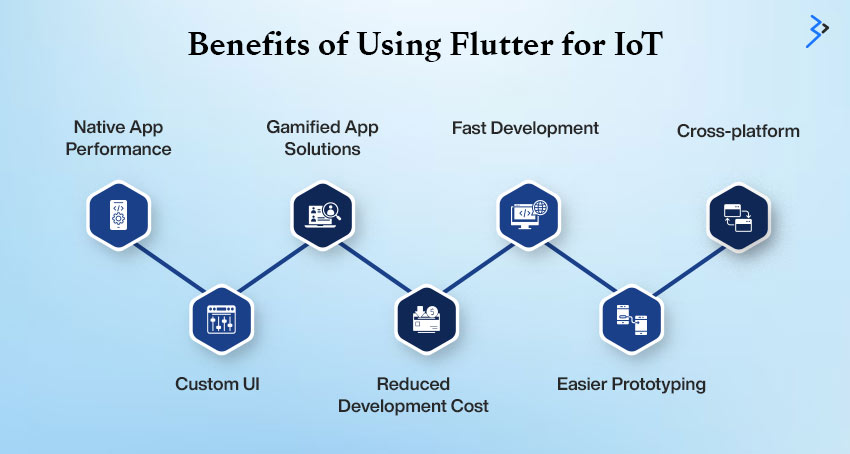
Native App Performance
One factor that degrades an application’s performance is its simplicity of use. People prefer programs that use the built-in functionality of an operating system or platform, such as Android or iOS.
This is exactly what Flutter does. It achieves native-like app performance by using the inherent qualities of the devices on which it will be executed. To create native IoT apps, you may leverage Flutter libraries and configurable and pre-built widgets.
Gamified App Solutions
An innovative UI design will ensure IoT stands out from ordinary apps. Gamified solutions, achievable only with the interactive Flutter app development framework, are one way to distinguish IoT as a Gen Z phenomenon.
Creating gamified interfaces speeds up and makes the development process more enjoyable. They also help users stay anchored with incentive offers.
Fast Development
Flutter’s main differentiating characteristic is fast development, allowing it to outperform competing application-building platforms. You only need to write one line of code, and your program will be compatible with numerous platforms.
This functionality saves time and work in developing several codes for each platform. With enough time, developers may test and evaluate real-time changes soon after implementation.
Cross-platform
Flutter enables the IoT app to operate across various platforms with a single codebase. This unique feature makes it a popular choice among developers, who believe it is a resource-saving option for mobile application development.
Because the IoT application has no limitations in terms of device usage, it must be designed using a platform that can provide smooth operations across different platforms, all with a single code.
Custom UI
The ability to personalize your IoT device is a significant advantage when designing cutting-edge gadgets. Because Flutter provides various tools, it may be quickly customized to fit individual requirements. Consequently, you may design an app’s interface that entices consumers to spend hours exploring its features.
Reduced Development Cost
Deploying IoT applications on multiple platforms requires an individual development team for each platform, which incurs an additional cost. However, with Flutter, this limitation is no longer a problem. You just need a one-time developer for single-code development.
Easier Prototyping
Prototyping your software helps you see how it will work and can speed up development. The initial stages include designing an IoT app to generate a proof of concept. Flutter ensures that proof-of-concept IoT models may be released faster than other frameworks. If the idea is viable, you can accelerate its commercialization.
Read More: The Rise of Flutter 3.0: Key Enhancements and Trends
Case Studies: Flutter’s Impact on IoT
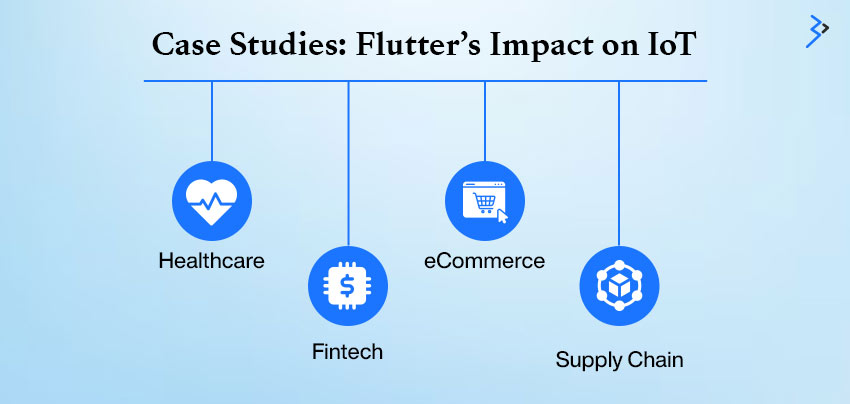
Healthcare
Use Case: Remote Patient Monitoring
Transformation:
Wearables and health technologies provide a dynamic intersection between IoT and personal well-being. Thanks to the growing usage of fitness trackers, smartwatches, and health monitoring devices, people may now measure their physical activity, get real-time health data, and monitor their vital signs.
The IoT ecosystem in healthcare extends beyond wearables to include linked medical equipment for remote patient monitoring and data collecting.
These innovations empower people to take control of their health and give medical professionals valuable data for early detection and personalized treatment choices.
Health technologies and wearables are good examples of how IoT can improve everyday living by encouraging proactive health management.
Fintech
Use Case: Real-Time Financial Transactions
Transformation:
Flutter enables financial apps to aggregate data and efficiently process real-time transactions from several financial sources.
This capacity alters traditional financial management by allowing for speedier transaction processing, assuring robust security measures, and providing a smooth and uniform user experience across several platforms, such as smartphones, tablets, and computers.
The framework’s cross-platform design enables developers to construct feature-rich financial apps using a single codebase, lowering development time and costs. Consequently, Flutter allows businesses to deliver accessible, dependable, and user-friendly financial solutions, encouraging confidence and simplicity for consumers who manage their funds in a fast-paced digital environment.
eCommerce
Use Case: Smart Inventory Management
Transformation:
The rise of IoT in industrial applications is inevitable! The Internet of Things has transformed retail by delivering cutting-edge technologies to improve shopping experiences.
RFID-tagged smart shelves provide real-time inventory tracking, reducing the possibility of stockouts and overstocks. In-store beacons and sensors provide targeted offers and promotions based on the customer’s location and preferences.
Furthermore, IoT-enabled checkout techniques, such as automated accounting systems, have redefined customer convenience. Integrating IoT allows retailers to create tech-driven environments that fulfill modern shoppers’ evolving expectations and streamline operations.
Supply Chain
Use Case: Asset Tracking and Management
Transformation:
One of the most essential applications of IIoT in manufacturing is linked transportation, which is revolutionizing how we travel and move around. Intelligent transportation networks are built by combining IoT technology with infrastructure, traffic management systems, and autos.
When equipped with sensors and communication capabilities, smart automobiles can communicate with the surrounding infrastructure and one another. This enables real-time traffic control, route optimization, and an increase in overall road safety.
IoT also aids with predictive maintenance, which helps discover and resolve potential automotive problems before they worsen.
The arrival of self-driving cars and real-time traffic updates via navigation apps are just two examples of how the Internet of Things transforms linked transportation and how people move in the future.
Comparing Flutter with Other IoT Development Frameworks
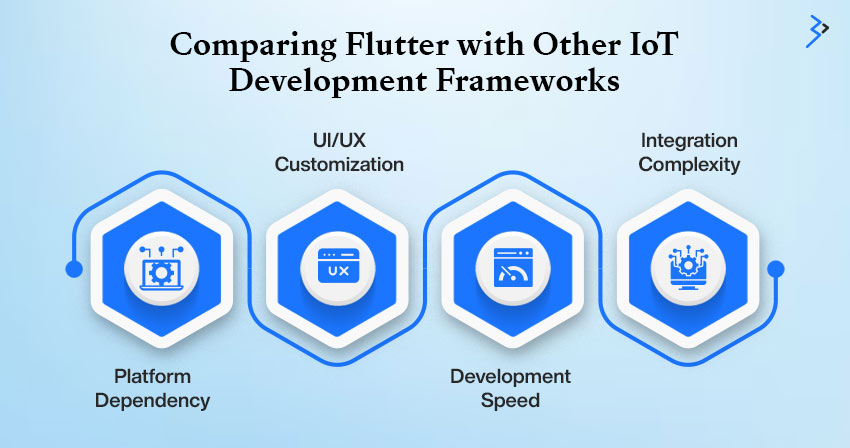
| Feature | Traditional IoT Frameworks | Flutter |
| Platform Dependency | Often platform-specific | Cross-platform with a single codebase |
| UI/UX Customization | Limited, dependent on the platform | Highly customizable with Flutter’s flexible UI toolkit |
| Development Speed | Slower due to separate codebases | Faster with unified development |
| Integration Complexity | Complex, especially for cross-platform apps | Simplified with Flutter’s built-in support and plugins |
FAQs
Q1. How does Flutter handle real-time data streaming for IoT applications?
Flutter handles real-time data streaming using plugins such as stream and web_socket_channel. These plugins enable smooth connection between IoT devices and apps, allowing developers to create reactive interfaces that respond to incoming data.
Q2. Can Flutter be integrated with popular IoT platforms like AWS IoT or Google Cloud IoT?
Flutter can interface with AWS IoT, Google Cloud IoT, and other comparable systems via APIs and plugins. Libraries like aws_iot and googleapis promote connectivity, making obtaining device data easier, controlling cloud services, and carrying out IoT operations.
Q3. What are the challenges of using Flutter for IoT applications?
Key problems include managing limited hardware resources for IoT devices, maintaining protocol compatibility, and attaining real-time performance. Furthermore, maintaining strong security for device communication and connecting with proprietary IoT systems may necessitate extensive customization.
Q4. How does Flutter ensure security in IoT communications?
Flutter supports safe IoT connectivity using encryption standards such as TLS/SSL. Developers can use secure authentication techniques (OAuth2, token-based systems) and plugins like HTTP and mqtt_client to build secure connections with IoT devices and platforms.
Q5. What protocols are supported by Flutter for IoT device communication?
Flutter supports protocols like MQTT, WebSockets, HTTP/HTTPS, and CoAP for IoT device communication. These protocols are implemented via plugins such as mqtt_client, web_socket_channel, and REST API libraries, enabling versatile communication with connected devices.
Q6. How do you optimize Flutter apps for low-power IoT devices?
To optimize Flutter apps for low-power IoT devices, developers should reduce background processing, employ efficient state management, and limit animations. Using lightweight communication protocols such as MQTT and minimizing network utilization further reduces device power consumption.
Q7. What are the best practices for developing IoT applications using Flutter?
Best practices include selecting and optimizing network queries, guaranteeing safe data delivery, suitable state management systems, and testing apps on many devices. Using Flutter plugins for real-time communication and modularizing code for scalability improves development efficiency.
Still Confused?
IoT is the future of innovative businesses. It has allowed organizations with a gateway to innovate the way they operate. Your organization has practically limitless IoT applications, ranging from smart cities and blockchain to edge computing and artificial intelligence.
However, not every organization can leverage these systems due to their complexities. It’s best to connect with trusted industrial IoT development services for professional guidance.
So, if you’re still confused about “How can we ensure seamless cross-platform development with Flutter?
Talk to us today! Let Brainvire be the IoT development company that drives your strategic growth.
Related Articles
-
Ionic React vs React Native: A Detailed Comparison
In this generation of cross-platform, hybrid, and progressive web applications, mobile app development is no longer native iOS development using Java. A plus point of working in the service industry
-
How Are Mobile Apps Changing Sports Betting?
If you visit the Play Store, you are likely to get bombarded by many mobile sport betting applications that promise the best possible betting experience. However, with the recent introduction
-
Top 5 Myths About Mobile App Development
Mobile app development has created a lot of hype in the market that’s stimulating the businesses to build the apps and monetize. The app designing and development is not easy-peasy.

